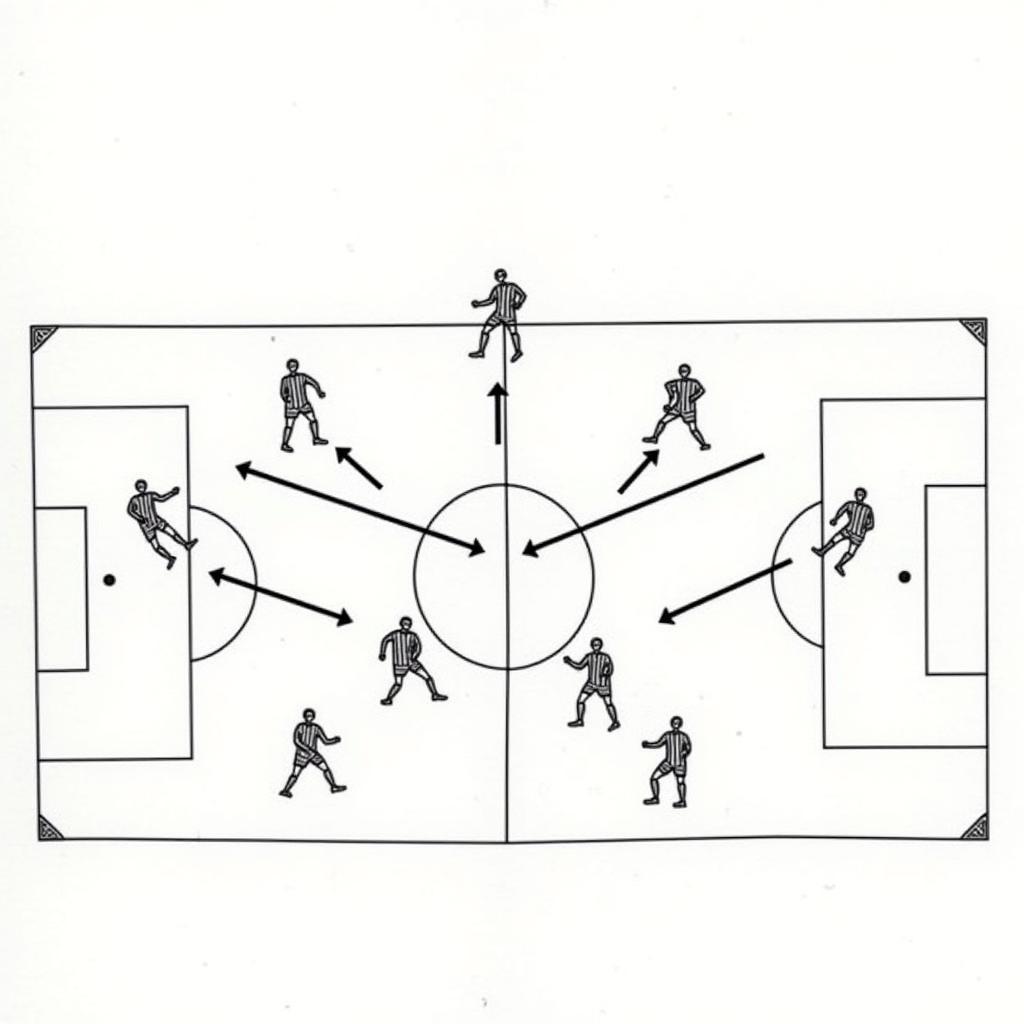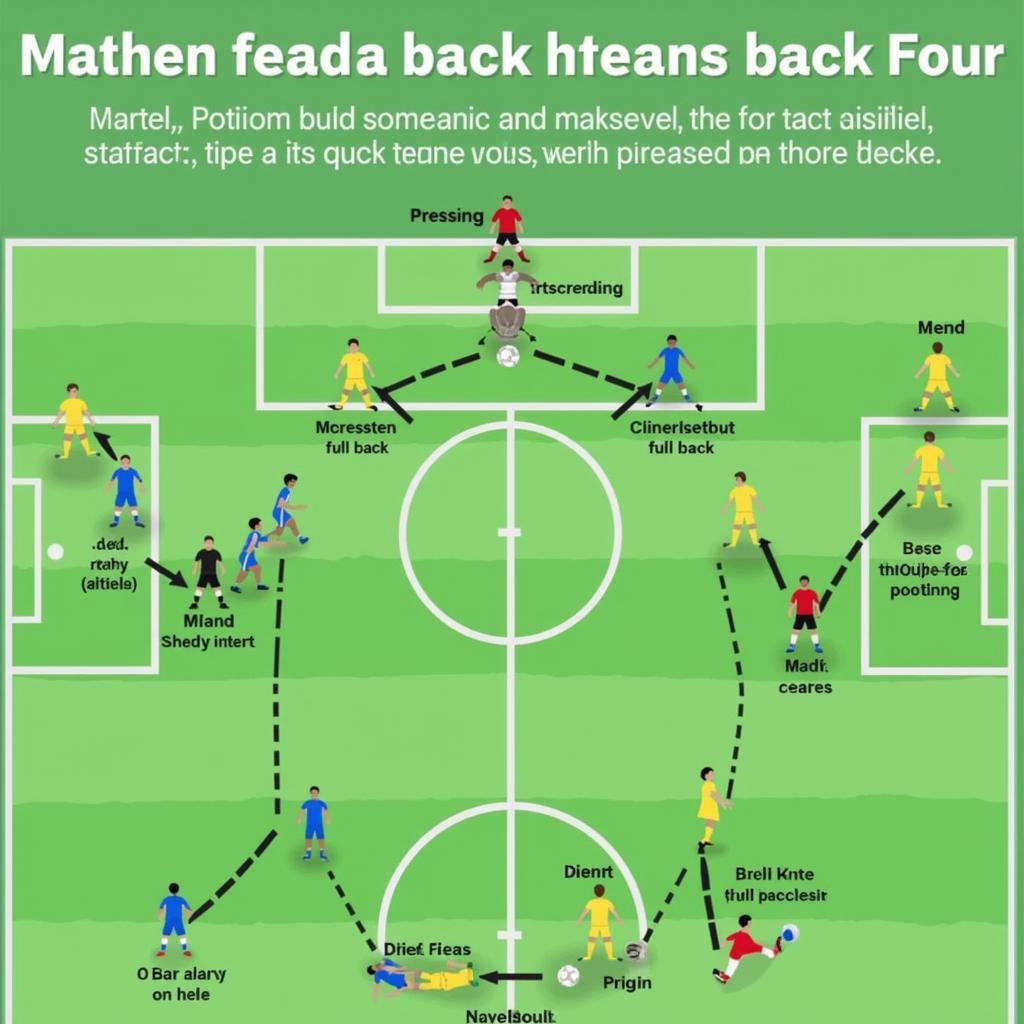A Look Back at the Storied History of the Football Back Four
October 21, 2024The football back four, a tactical formation that revolutionized the beautiful game, boasts a rich and captivating history. This defensive setup, featuring two center backs and two full backs, has evolved over decades, shaping the strategies and outcomes of countless matches and leaving an undeniable mark on football history.
The Genesis of a Defensive Revolution: Where It All Began
The concept of a four-player defensive line can be traced back to the early 20th century. However, its widespread adoption and rise to prominence are often credited to the innovative approaches of managers like Austria’s Karl Rappan in the 1930s. Rappan’s “W-M” formation, employing a four-man defense, aimed to counter the then-dominant “2-3-5” formation, bringing a new level of defensive stability and tactical nuance to the game.
 Early Back Four Formations
Early Back Four Formations
The Catentaccio Era: Italian Mastery and Defensive Solidity
The 1960s witnessed the Italian “Catenaccio” system rise to prominence. This highly organized and defense-oriented approach, championed by teams like Inter Milan under Helenio Herrera, relied heavily on a disciplined back four. Their ability to stifle attacks and control the tempo of the game led to significant success on the European stage, cementing the back four’s reputation as a potent tactical weapon.
 Italian Catenaccio Defense
Italian Catenaccio Defense
Total Football and the Evolution of the Back Four
The emergence of “Total Football” in the 1970s, spearheaded by the Dutch national team and Ajax Amsterdam under Rinus Michels, challenged the perception of the back four as a purely defensive unit. While retaining defensive solidity, Total Football demanded that full-backs contribute offensively, overlapping and providing width to the attack. This dynamic interpretation of the back four showcased its adaptability and underlined its potential for influencing both phases of the game.
Modern Interpretations and Tactical Variations
In the modern game, the back four continues to evolve. Formations like 4-4-2, 4-3-3, and 4-2-3-1 all utilize a back four as their defensive foundation. Managers and players constantly adapt their approaches, employing innovative strategies to gain a competitive edge. High pressing, intricate passing sequences, and the rise of attacking full-backs are just a few examples of the ever-evolving nature of the back four.
 Modern Back Four Tactics
Modern Back Four Tactics
The Enduring Legacy of the Football Back Four
The football back four’s journey from its early iterations to its contemporary forms reflects the sport’s constant tactical evolution. This iconic formation, synonymous with defensive solidity and tactical flexibility, has left an enduring legacy, shaping the strategies of countless teams and captivating the hearts of football enthusiasts worldwide. As the beautiful game continues to evolve, one can be sure that the back four, with its rich history and adaptable nature, will continue to play a significant role in shaping football’s future.